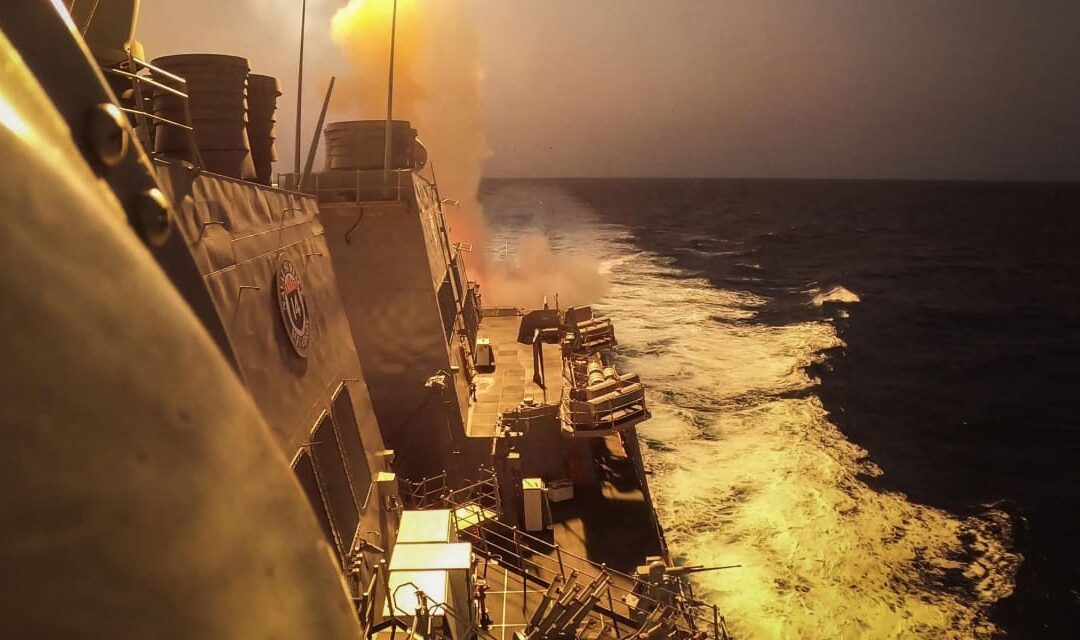Oil traders have been closely watching developments in the Middle East for any signs of disruption to global supplies, but the major players in the conflict have engaged in “calibrated” moves to avoid making matters worse, according to a recent note research from Macquarie.
“No major actor wants the conflict to result in all-out war and most parties appear to be responding to instigation in a measured way that does not seek heavy escalation,” strategists at Macquarie wrote in a note dated Thursday, citing observations from two of the company’s global intelligence and security analysts.
Macquarie looked closely at three of the entities involved in the Middle East conflict.
Macquarie
Oil prices have had their ups and downs since Iran-backed Houthi rebels in Yemen began attacking ships traveling through the Red Sea, a key transit point for oil and oil products, in the wake of the Israel-Hamas war that began in early October.
Prices, however, have remained in a tight trading range since the start of the new year, with U.S. benchmark crude prices holding between a low of $70 and highs around $74 a barrel and global benchmark prices trading between $75 and $79 a barrel.
In Friday’s dealings, the most active March West Texas Intermediate oil contract
CL.1,
CLH24,
fell 69 cents, or 0.9%, to $73.26 a barrel on the New York Mercantile Exchange. March Brent crude
BRN00,
BRNH24,
on ICE Futures Europe traded at $78.46 a barrel, down 62 cents, or 0.8%.
Read: Why Red Sea chaos is driving oil buyers ‘into the arms of U.S. shale producers’
As of Jan. 17, the Houthis have launched more than 30 attacks in the Red Sea against international commercial vessels and dozens more against non-commercial and unspecified targets, with the ships having connections to around 55-plus nations, said strategists at Macquarie.
They noted that the largest escalation took place on Jan. 9 when Houthi militants targeted U.S.-led coalition naval vessels with clustered munitions, including drones and missiles. That was followed by a “retaliatory ‘tit-for-tat’ action” that saw the coalition conduct joint strikes on Houthi military targets on land, they said.
Despite the escalation in the Red Sea, however, most attacks have included a single or small number of projectiles, have been “highly calibrated,” and yet caused minimal damage, the Macquarie strategists said. U.S.-led responses have been “equally calibrated.”
Read: Here’s what’s been keeping a lid on oil prices despite risks of a wider war in the Middle East
“The measured nature of Houthi tactics demonstrates a primary tactical goal of creating widespread concern for maritime shipping rather than inflicting significant damage to specific targets,” they said. Even so, “tit-for-tat” actions are likely to “persist and Houthi actions will continue to pose a threat to crude and especially refined-product supply logistics, even if overall supply is largely unchanged.”
In their note, the Macquarie strategists presented two geopolitical risk scenarios for the next month or two.
The first scenario, which is the most likely, would be continued incidents and “small escalations within the boundaries of the current ‘status quo’ as the Gaza conflict and Houthi-Saudi negotiations related to Yemen’s civil war remain ongoing,” they said.
In that scenario, “high-visibility” ships would remain the most likely targets for Houthi forces and the “’tit-for-tat’ aggressions” would continue, they said. “Calibrated” actions by the Houthis in the Red Sea would come at “little political and financial cost while creating leverage in peace talks to obtain greater concessions from Saudi Arabia and incentivize the international community to engage.”
Primary regional players like Saudi Arabia would remain “restrained so as not to endanger ongoing negotiations with the Houthis or upset the current détente with Iran,” while the U.S.-led coalition would have “limited appetite for response and tactical preference for the use of defensive-reactionary measures,” the strategists said.
Such a scenario would likely see a “continued stall,” but not a regression, in the Saudi-Houthi discussions, along with a continuation of the conflict in Gaza, they said.
The second scenario, which the strategists see as “highly unlikely,” would be a significant escalation in the conflict should the Houthis or Iran “internationally and successfully target Israel or vice-versa,” or if Iran-backed militia and U.S. forces engage in a mass-casualty event in Iraq, or a mass-casualty event takes place in the Red Sea.
Such a scenario may lead to direct and successful targeting of Israeli territory by the Houthis and/or Iran, or of Iranian territory by Israeli forces, or a mass-casualty event in Iraq for Iran-backed militias and/or for U.S. forces in the region, the strategists said.
For now, they expect the sparring and skirmishes to likely continue for the “indefinite future.”
Maritime attacks by the Houthis “present the largest source of logistical and overall supply risk to the [oil] market,” they said.








